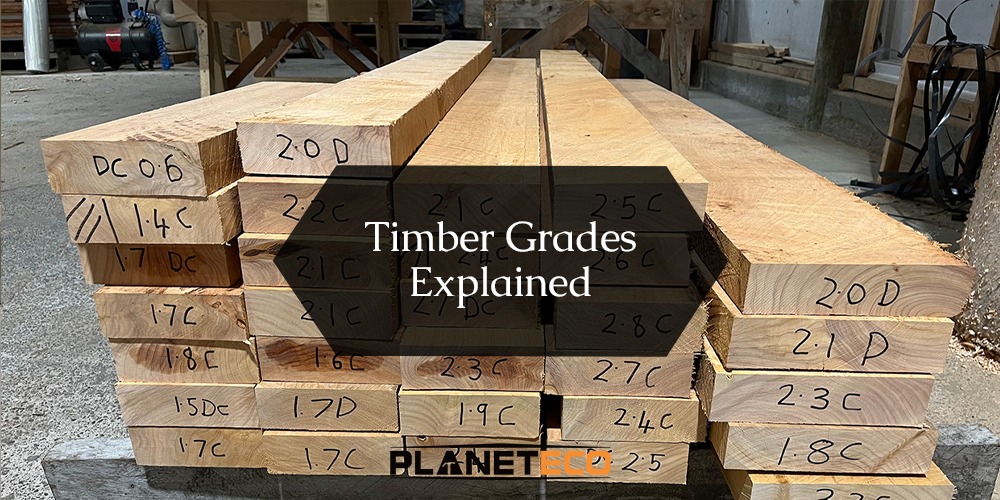Let’s face it, not all timber is created equal. Whether you’re building a shed, crafting a table, or framing a house, understanding timber grades is key to choosing the right wood for the job. At Planeteco, a trusted UAE-based supplier of quality timber, educating customers about timber grading is part of our mission to ensure smarter, stronger builds.
What is Timber Grading?
Timber grading is the process of setting wood based on its quality, strength, and build. Grades help decide whether a piece of wood is just for structural work, furniture, or just firewood.
Why Timber Grading Matters
Choosing the wrong timber grade can lead to weak structures, poor aesthetics, and wasted money. Grading gives builders, carpenters, and DIYers a standard to trust when selecting timber. Planeteco confirms that all timber products are graded and compliant with UAE building standards.
Types of Timber
Softwood vs Hardwood
Softwoods reach from coniferous trees like pine and spruce fast-growing and often used in building. Hardwoods reach from deciduous trees like oak and walnut, slower-growing but denser and often more attractive.
Common Timber Species and Their Uses
- Pine – general construction and furniture
- Douglas Fir – strong, used for beams and trusses
- Oak – premium furniture and flooring
- Spruce – framing, roofing, and cladding
Timber Grading Systems
Visual Grading
A trained eye inspects knots, splits, grain patterns, and defects. It’s old-school, but it works, especially when aesthetics matter.
Machine Grading
Timber is mechanically tested for stiffness and strength. More even and objective, it’s common in structural grading.
British Standard Grading (BS 4978)
This UK standard classifies softwoods into strength classes such as C16, C24, and so on.
European Grading (EN 14081)
The European system includes machine and visual grading under one suitable standard, widely accepted across the EU and often referenced by Planeteco when supplying timber to construction projects across the UAE.
Structural vs Appearance Grades
What is Structural Timber?
Structural grades (like C16 and C24) are rated for strength and load-bearing ability. They’re used in beams, rafters, and frames.
What is the Appearance of Graded Timber?
This grade prioritizes aesthetics. It’s the go-to for visible timber in interiors and decorative builds.
Examples of Use Cases
- C24 for roof trusses
- Appearance grade for oak stair treads
- C16 for garden decking frames
Common Structural Timber Grades
C16 Grade Timber
Affordable and widely available, the C16 is suitable for light domestic construction. It has more knots and imperfections.
C24 Grade Timber
Stronger, denser, and with fewer defects. C24 is ideal for load-bearing applications and has better durability. It’s a top recommendation from Planeteco for residential and commercial structures in the UAE.
C27 and Beyond
Used for special engineering applications. Rarely needed for regular builds but is critical in high-stress environments.
Visual Grading Criteria
Knots
Too many or large knots weaken the timber that’s why they matter.
Grain Variation
Wavy or irregular grain patterns can cause uneven strength and stress points.
Splits and Wane
Cracks, splits, and missing edges reduce both visual and structural quality.
Machine Grading Explained
How It Works
Machines measure timber’s stiffness and elasticity using pressure and sensors. The result? A reliable strength classification.
Pros and Cons
Pros: More consistent, fast, ideal for mass grading
Cons: Doesn’t account for visual appeal
International Timber Grading Standards
US (NDS/PS 20)
Grades like No. 1 and No. 2 based on strength are commonly used in framing.
Australia (AS/NZS 1748)
Species-independent system assigning structural grades like F5 and F7.
Canada (NLGA)
Visual and machine grades that align with US systems, adding climate-specific considerations.
Moisture Content and Timber Quality
Why Moisture Levels Matter
Too much moisture = warping and splitting. That’s a disaster waiting to happen.
Kiln-Dried vs. Air-Dried Timber
Kiln drying is faster and more controlled; air drying is natural but slower. Dry wood = stable wood. Planeteco offers both options based on your project needs in the UAE’s varying climate conditions.
Pressure Treated Timber and Grading
What is Pressure Treatment?
Timber is infused with preservatives to resist rot, insects, and fungus. Essential for outdoor use.
How It Affects Timber Grade
Pressure treatment doesn’t change the grade but enhances durability. Always check both the grade and treatment tag.
Sustainable Grading and Certifications
FSC and PEFC Certified Timber
These logos mean the wood was harvested responsibly. Good for the planet and your conscience.
Environmental Impact of Grading Systems
Grading timber also helps reduce waste. Quality checks prevent subpar wood from being used and discarded.
Applications Based on Grade
Choosing the Right Grade for Flooring
Go for appearance-graded hardwood; you want it to be pretty and durable.
Grades for Furniture Making
High-grade hardwoods like walnut or maple are smooth, consistent, and beautiful.
Structural Timber in Construction
Always choose structural grades (C16 or above) for anything that bears weight.
How to Read a Timber Grade Stamp
Decoding the Information
Typical stamps include species, grade (e.g., C24), moisture content, certification, and origin.
Examples
C24 KD FSC UK = Structural grade, kiln dried, sustainably sourced, UK origin.
Buying Tips for Timber
Questions to Ask Your Supplier
- Is it graded and stamped?
- What’s the moisture content?
- Has it been pressure-treated?
Red Flags to Watch Out For
- No visible stamp
- Cracks or wane on edges
- Too many large knots
Conclusion
Timber grading might seem overwhelming at first, but it’s your secret weapon for choosing the right wood. Whether you’re building a deck, framing a home, or making a bookshelf, understanding the grade helps you pick timber that’s strong, safe, and suited for your needs. Don’t cut corners. Choose the grade that fits the job. UAE suppliers like Planeteco are committed to offering the right grade for every purpose, backed by expert advice and global grading standards.

